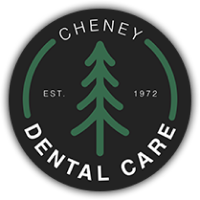TMJ Pain? Here’s How Treatment Can Restore Your Jaw Function

Do you experience persistent jaw pain, headaches, or discomfort while chewing? These could be signs of temporomandibular joint (TMJ) disorder, a condition that affects the jaw’s ability to function properly. TMJ pain can disrupt your daily life, turning simple tasks like eating, speaking, and even smiling into uncomfortable experiences. If left untreated, the discomfort can worsen, impacting not only your jaw but your overall well-being. Fortunately, effective treatments are available that can restore jaw function and significantly reduce pain. Keep reading to discover how addressing TMJ pain can improve your quality of life and help you regain control of your jaw’s natural movements.
Understanding TMJ Pain and Its Impact on Your Life
Temporomandibular Joint (TMJ) disorder can cause significant pain and dysfunction in the jaw, affecting daily activities like eating, speaking, and even smiling. This condition, which involves the muscles and joints that connect your jawbone to your skull, can disrupt your life in unexpected ways. From mild discomfort to severe pain, TMJ disorder is something many people endure without fully understanding its causes or seeking proper treatment.
While TMJ pain may start as occasional discomfort, if left untreated, it can escalate, leading to chronic issues. Identifying the signs early and getting the right treatment can significantly improve your quality of life. Let’s explore what TMJ disorder is, how it manifests, and most importantly, how effective treatment can help you regain normal jaw function.
Causes and Symptoms of TMJ Disorder
TMJ disorder can develop for various reasons, with stress and jaw misalignment being common factors. Teeth grinding (bruxism), arthritis, and injuries can also contribute to this painful condition. The complexity of the temporomandibular joint, which allows your jaw to move in different directions, makes it particularly susceptible to stress and damage.
Key Symptoms of TMJ Disorder:
- Jaw pain or tenderness
- Clicking or popping sounds when opening or closing the mouth
- Difficulty chewing or biting
- Jaw locking or becoming stuck
- Headaches, earaches, or neck pain
People often assume that jaw pain will simply resolve itself, but without treatment, the symptoms can worsen over time. Living with untreated TMJ pain can lead to chronic discomfort, affecting not just the jaw but also other areas such as the neck, shoulders, and head.
How TMJ Pain Affects Jaw Function
The temporomandibular joint is essential for movements like talking, chewing, and yawning. When this joint malfunctions, even basic tasks become difficult. TMJ pain can make chewing tough foods uncomfortable, cause pain when you speak for extended periods, and even disrupt your sleep due to jaw clenching. Over time, untreated TMJ issues can also lead to uneven wear on teeth, worsening oral health.
This dysfunction impacts more than just physical well-being. Chronic TMJ pain can take a toll on your emotional health, leading to frustration, anxiety, and stress. When your jaw is constantly in pain, it can affect your overall happiness and ability to enjoy life.
Non-Surgical Treatment Options for TMJ Pain
Fortunately, several non-invasive treatments can effectively alleviate TMJ pain and restore jaw function. Early intervention is key to preventing the condition from worsening and avoiding surgery.
1. Jaw Exercises and Physical Therapy
One of the first steps in treating TMJ disorder is through targeted jaw exercises designed to strengthen the muscles around the temporomandibular joint. Physical therapy, under the guidance of a dental professional, can reduce pain and improve the range of motion. These exercises may include stretching, strengthening, and postural correction.
For many patients, regular physical therapy can help relieve TMJ symptoms without the need for more invasive treatments.
2. Oral Splints and Mouthguards
Custom-made oral splints, such as bite guards, can be worn at night to reduce the strain on your jaw and prevent teeth grinding. These devices help align the jaw properly, reducing tension and pain associated with TMJ disorder. Since bruxism is a common contributor to TMJ issues, a mouthguard can be an essential tool for preventing further damage to the joint and teeth.
3. Medication and Pain Relief
For some individuals, medications such as non-steroidal anti-inflammatory drugs (NSAIDs) may be prescribed to alleviate pain and inflammation. Muscle relaxants can also be recommended in cases where muscle spasms contribute to TMJ discomfort. While medication may not be a long-term solution, it can provide temporary relief as part of a comprehensive treatment plan.
4. Stress Management Techniques
Stress plays a significant role in TMJ pain, as it often leads to clenching or grinding the teeth. Techniques such as meditation, deep breathing exercises, and yoga can help manage stress levels, reducing the likelihood of exacerbating TMJ symptoms. Your dentist may also recommend behavioral therapies to address habits like nail-biting or chewing on pens that contribute to jaw tension.
Advanced Treatment Options for TMJ Pain
When non-surgical methods don’t provide sufficient relief, advanced treatments may be considered. These options are typically explored after conservative approaches have been exhausted.
1. Laser Therapy
Laser treatment is another innovative approach for managing TMJ pain. Using targeted light energy, lasers can reduce inflammation, promote healing, and decrease pain in the affected areas. Laser therapy is non-invasive and can be a highly effective way to restore jaw function.
2. Surgical Intervention
In severe cases where all other treatment options have been explored, surgery may be necessary to repair or replace the temporomandibular joint. This is usually reserved for individuals who experience significant joint damage or have structural issues that prevent proper function. Arthroscopy, open-joint surgery, and joint replacement are some of the surgical options available, depending on the severity of the condition.
Surgery is considered a last resort, and most patients find relief through less invasive methods. However, for those with advanced TMJ disorders, surgery can be a life-changing option that restores full jaw functionality.
Restoring Jaw Function with Professional TMJ Care
The key to restoring proper jaw function and eliminating TMJ pain lies in receiving timely and expert care. Seeking help from a professional experienced in TMJ treatment ensures that the root cause of your pain is identified and addressed with a personalized treatment plan. Whether you’re experiencing mild discomfort or chronic pain, professional care can prevent further damage and help you regain control over your daily activities.
1. Comprehensive Evaluation
The first step in treating TMJ disorder is a comprehensive evaluation of your jaw function. This includes examining the alignment of your bite, the condition of your teeth, and the range of motion in your jaw. X-rays or other imaging tests may be recommended to assess any structural damage or abnormalities.
2. Tailored Treatment Plans
Every individual’s TMJ disorder is unique, so your treatment plan should be customized to your specific needs. Whether it involves physical therapy, splints, injections, or more advanced options, the goal is to relieve pain and restore normal jaw function. Regular follow-ups with your dental professional are crucial to monitor progress and make necessary adjustments to your treatment plan.
3. Long-Term Management
Managing TMJ disorder often requires a combination of treatments and lifestyle adjustments. By incorporating stress management techniques, maintaining a healthy posture, and avoiding habits that strain the jaw, you can reduce the likelihood of recurring pain. Routine care from your dental team is also essential in maintaining long-term jaw health.
Why You Shouldn’t Ignore TMJ Pain
Ignoring TMJ pain can lead to more than just discomfort. Left untreated, this condition can cause long-term damage to your teeth and jaw, affecting your overall oral health. In severe cases, it can even impact your ability to chew and speak properly. Seeking treatment early on is the best way to prevent these complications and maintain optimal jaw function.
Living with TMJ pain doesn’t have to be a permanent reality. With the right treatment, you can restore jaw function, reduce pain, and improve your overall quality of life. Whether you’re dealing with mild discomfort or severe symptoms, reaching out to a Dentist Cheney can be the first step toward relief.
Conclusion
If you’re dealing with persistent TMJ pain, don’t wait until it worsens. Professional care and timely treatment can help you regain full jaw function and enjoy a pain-free life. Regular check-ups, customized treatment plans, and self-care practices all contribute to long-term relief. Whether it’s through physical therapy, oral appliances, or other methods, addressing your TMJ issues promptly will improve your comfort and health. Routine TMJ care in Cheney can be a game-changer in managing this complex condition.

